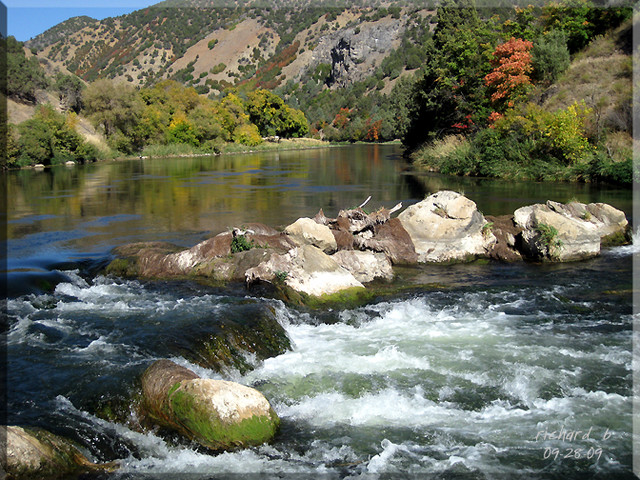The U.S. House of Representatives has passed a proposal by Congressmen Blake Moore of Utah that is a first step toward creating a federally designated seven-county Bear River heritage area.
WASHINGTON, D.C. – Thanks to wide bipartisan support, the U.S. House of Representative passed the Bear River Heritage Area Study Act on Tuesday.
That proposed legislation was introduced in June by U.S. Rep. Blake Moore (R-District 1).
In a rare demonstration of congressional bipartisanship, Moore’s bill was passed by a vote of 399 to 23 on the floor of the House.
“I am immensely proud that the House has passed the Bear River National Heritage Area Study Act,” Moore said after that floor vote. “As I worked closely with communities in the Bear River Basin, I have been struck by the historical significance this region brings to our state and our nation’s story.
“Ensuring that this history can be fully preserved and remembered will promote tourism and shine a light on our local heritage.”
The Bear River Heritage Area Study Act was co-sponsored by Rep. Mike Simpson (R-ID).
That proposed legislation would require the U.S. Department of the Interior to study the feasibility of establishing a national heritage area covering the historic Bear River region, an area of seven counties encompassing parts of northern Utah and southeastern Idaho.
The congressmen say that such a designation would allow local communities in the Bear River area to protect important elements of their heritage and promote the area’s tourism industry.
A national heritage area (NHA) is a federally designated site intended to encourage historic preservation of an area’s resources and an appreciation of its historic significance.
There are currently 55 such sites in the United States.
NHAs are not owned or managed by the federal government. They are administered by state governments or non-profit organizations that are designated as local coordinating entities.
NHAs are created by individual acts of Congress. Such areas must meet specific designation criteria, including having a nationally unique natural, cultural, historic or scenic character. Each NHA must also tell “a unique story about the United States.”
Moore says that passage of The Bear River Heritage Area Study Act is a vital first step toward establishing the Bear River Heritage Area and elevating this important land to a more distinguished classification.”
The next step in this process will be to find a co-sponsor for the bill on the Senate side of Capitol Hill, according to Moore.
The Bear River Heritage Area Study Act is supported by numerous stakeholding groups and organizations.
They include the Bear River Association of Governments; the Cache Daughters of Utah Pioneers Museum; the Cache Valley Center for the Arts; the Cache Valley Chamber of Commerce; the Cache Valley Visitors Bureau; the City of St. Charles, ID; the Folklore Society of Utah; the Franklin County Relic Hall Museum & Historical Site; Friends United for Bear Lake; the Idaho Commission on the Arts; Southeast Idaho High Country Tourism; and the Stokes Nature Center and others.

